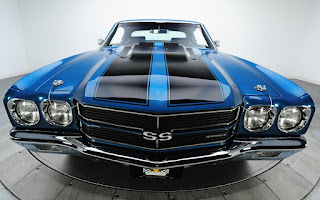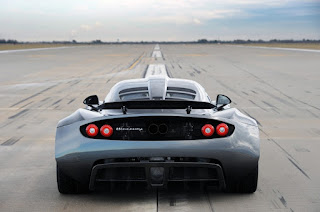Opposed Piston Engines
So what are opposed piston engines? Most of us know how a normal engine works. One of the most important parts in the engine is piston head which is sealed and allows the power to be produced.
Now, in the opposed piston engine the single piston in the single cylinder is changed to two pistons in one cylinder, their heads facing each other. How exactly that works, one would ask. The answer is that each of these cylinders would only take up half the length of the cylinder, so that it would only have to move half the distance of a cylinder in a standard engine, thus saving fuel yet still providing the same rotating effect on the crankshaft. And the crankshaft could pass through the centre of the cylinder, perpendicular to the cylinder's long axis, so that both pistons could rotate the crankshaft as they moved in opposite directions. And they could pool their exhaust wastes in the centre of the cylinder, so that the ends of the cylinder wouldn't have to be capped off to keep the noxious exhaust fumes from escaping before they needed to. This increases the efficiency of the engine and also leads to smaller displacement engines for similar performance, and lower in-cylinder pressure to lower emissions compared to four-stroke conventional engines.
To think that why has this simple failed to come up for so many years is wrong. The first use of the opposed piston engine was done way back in 1882 by James Atkinson in the Atkinson cycle. Opposed piston engines using the two stroke cycle are known to have been made by Oechelhäuser as early as 1898, when a 600 hp 2-stroke gas engine was installed at the Hoerde ironworks. Smaller versions of opposed piston engines suitable for motor vehicles probably begin with the French company Gobron-Brillié around 1900. In April 1904 a Gobron-Brillié car driven by Louis Rigolly and powered by the opposed piston engine was the first car ever to exceed 150km/h with a "World's Record Speed" of 152.5km/h and on 17 July, again driven by Rigolly, the first to exceed 100 mph for the flying kilometre.
Therefore again the question, why did we stop its use? Well there is the other side of every coin. The main disadvantage was that the power from the two opposing pistons has to be geared together, adding weight and complexity when compared to more classical engines where pistons (in separate cylinders) are naturally geared together by their common crankshaft. Also high hydrocarbon emissions (due to carburetion and over-scavenging) and excessive oil consumption (due to oil-fuel mixing in spark-ignition engines and port oil ejection in compression ignition, direct fuel injection engines) are difficult issues to tackle in these type of engines.
But two leading companies Achates Power and Ecomotors which is backed by Bill Gates and Vinod Khosla are working on developing the engine in the next few years. Ecomotors is already developing the engine for DARPA. The engine has two pistons in the single cylinder effectively interlaced, with each one divided into two parts and moving inside one another in opposite directions creating the compression stroke, so that the opposing ends of one part of each piston are closing together and compressing the fuel air mixture between them while the opposing ends of the other are moving apart to admit air in the gap to create the intake stroke. Since these two strokes are simultaneous, the whole action of the pistons takes only two back and forth motions, thus making this a two-stroke engine instead of the more conventional four-stroke engine. And because these two pistons in one cylinder perform the work of the two pistons in two ordinary cylinders, they do only the work that normally goes on in one cylinder but apply two cylinders worth of motion to the crankshaft. This gives the opposed piston engine a high power density -- that is, a high ratio of power to the mass of the engine itself.
Also what is interesting is that all the engines are modular and thus they can operate together thus making many modular engines to a single more powerful engine.
A variation of it called the Free Piston engine has also renewed the interest in the research of it. It can be used to power vehicles by using it to drive a linear alternator.
Thus before we get to use fully electric vehicles or vehicles driven by hydrogen fuel this is the best way to get the most out of the current situation.
Image source: Google
So what are opposed piston engines? Most of us know how a normal engine works. One of the most important parts in the engine is piston head which is sealed and allows the power to be produced.
Now, in the opposed piston engine the single piston in the single cylinder is changed to two pistons in one cylinder, their heads facing each other. How exactly that works, one would ask. The answer is that each of these cylinders would only take up half the length of the cylinder, so that it would only have to move half the distance of a cylinder in a standard engine, thus saving fuel yet still providing the same rotating effect on the crankshaft. And the crankshaft could pass through the centre of the cylinder, perpendicular to the cylinder's long axis, so that both pistons could rotate the crankshaft as they moved in opposite directions. And they could pool their exhaust wastes in the centre of the cylinder, so that the ends of the cylinder wouldn't have to be capped off to keep the noxious exhaust fumes from escaping before they needed to. This increases the efficiency of the engine and also leads to smaller displacement engines for similar performance, and lower in-cylinder pressure to lower emissions compared to four-stroke conventional engines.
To think that why has this simple failed to come up for so many years is wrong. The first use of the opposed piston engine was done way back in 1882 by James Atkinson in the Atkinson cycle. Opposed piston engines using the two stroke cycle are known to have been made by Oechelhäuser as early as 1898, when a 600 hp 2-stroke gas engine was installed at the Hoerde ironworks. Smaller versions of opposed piston engines suitable for motor vehicles probably begin with the French company Gobron-Brillié around 1900. In April 1904 a Gobron-Brillié car driven by Louis Rigolly and powered by the opposed piston engine was the first car ever to exceed 150km/h with a "World's Record Speed" of 152.5km/h and on 17 July, again driven by Rigolly, the first to exceed 100 mph for the flying kilometre.
Therefore again the question, why did we stop its use? Well there is the other side of every coin. The main disadvantage was that the power from the two opposing pistons has to be geared together, adding weight and complexity when compared to more classical engines where pistons (in separate cylinders) are naturally geared together by their common crankshaft. Also high hydrocarbon emissions (due to carburetion and over-scavenging) and excessive oil consumption (due to oil-fuel mixing in spark-ignition engines and port oil ejection in compression ignition, direct fuel injection engines) are difficult issues to tackle in these type of engines.
But two leading companies Achates Power and Ecomotors which is backed by Bill Gates and Vinod Khosla are working on developing the engine in the next few years. Ecomotors is already developing the engine for DARPA. The engine has two pistons in the single cylinder effectively interlaced, with each one divided into two parts and moving inside one another in opposite directions creating the compression stroke, so that the opposing ends of one part of each piston are closing together and compressing the fuel air mixture between them while the opposing ends of the other are moving apart to admit air in the gap to create the intake stroke. Since these two strokes are simultaneous, the whole action of the pistons takes only two back and forth motions, thus making this a two-stroke engine instead of the more conventional four-stroke engine. And because these two pistons in one cylinder perform the work of the two pistons in two ordinary cylinders, they do only the work that normally goes on in one cylinder but apply two cylinders worth of motion to the crankshaft. This gives the opposed piston engine a high power density -- that is, a high ratio of power to the mass of the engine itself.
Also what is interesting is that all the engines are modular and thus they can operate together thus making many modular engines to a single more powerful engine.
A variation of it called the Free Piston engine has also renewed the interest in the research of it. It can be used to power vehicles by using it to drive a linear alternator.
Thus before we get to use fully electric vehicles or vehicles driven by hydrogen fuel this is the best way to get the most out of the current situation.
Image source: Google




Comments
Post a Comment